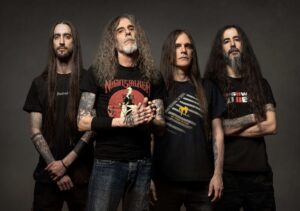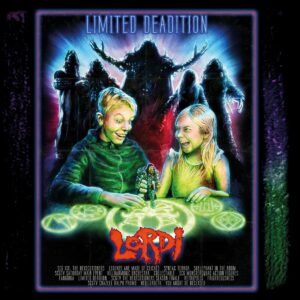5 Freddie Mercury Revelations From New ‘Intimate’ Biography: ‘He Could Out-Party Me,’ Says Elton John

Lesley-Ann Jones’ detailed account of the first major rock star to die of AIDS sheds light on friendships with David Bowie, Michael Jackson and his Queen bandmates.
LONDON — “Rock ‘n’ roll, of all unlikely disciplines, is one of the few remaining professions in which an individual or group can hold an audience in the palm of their hand, controlling a throng of thousands with their voice.”
So muses best-selling author Lesley-Ann Jones in her new in-depth biography, Mercury: An Intimate Biography of Freddie Mercury (Touchstone, 368 pages, July 3). In her view, film and TV stars don’t come close to the stature of the rock superstar, the last great compelling figure of our times. The Queen frontman, however, perfectly fits the bill.
More than two decades after his 1991 death of AIDS, the book details Mercury’s life, loves and friendships, leaving no stone unturned in its effort to get to the heart of the showman who was once described by a former lover — the German soft-porn star Barbara Valentin — as “mostly gay.”
As a journalist whose résumé boasts tours with The Rolling Stones, David Bowie, Paul McCartney and Elton John, Jones certainly has the credentials and the experience — she was standing backstage with the late Who bassist John Entwistle at London’s Wembley Stadium on Live Aid day in July 1985 and watched Mercury’s stagecraft. Queen’s performance in front of some 80,000 fans in the stadium and an estimated global audience of somewhere between 400 million and 1.9 billion via satellite in 50 countries (depending on who you choose to believe), is still regarded as one of the great moments in rock ‘n’ roll history.
Jones documents the band’s rise to international superstardom and digs deep into Mercury’s past via 100 new interviews with those closest to Mercury, many of whom are only opening up now, 20-plus years after he became the first major rock star to die from AIDS. Indeed, Jones tells The Hollywood Reporter that one of the biggest revelations in her book came from Oscar-winning lyricist Tim Rice, a friend she shared with Mercury who had collaborated with the singer on his 1988 album Barcelona with opera star Montserrat Caballe.
“It was Tim who sat me down once and talked me through the words for ‘Bohemian Rhapsody,’ ” Jones says. “He pointed out that it was very obvious to him early on it was Freddie’s ‘coming-out’ song.” But Jones describes Mercury as having been “incredibly mischievous,” pointing out that two greatest love affairs in the once-married Mercury’s complicated emotional life were with women. “But with his sex life, he could only really satisfy his needs with men,” she says.
With a biopic in the works and starring Sacha Baron Cohen (Jones also met with Peter Morgan, the film’s writer), Mercury is as relevant as ever, and this 350-page tome — described by publisher Simon & Schuster as a “key source” for the film — certainly helps promote the legacy of the man born Farrokh Bulsara in Zanzibar, an island off Africa’s East Coast. A must-read for any Mercury, Queen or rock fan, here are five fascinating highlights from this truly intimate portrait.
1. Freddie and Michael: “He has been a friend of ours for a long while,” explained Mercury, who visited King of Pop Michael Jackson at his mock-Tudor, pre-Neverland mansion on Hayvenhurst Avenue in Encino, Calif. “He used to come and see our shows all the time, and that is how the friendship grew … just think, I could have been on Thriller. Think of the royalties I’ve missed out on!” The two had worked together as well. As the book details, in Mercury’s words, “We had three tracks in the can [‘There Must Be More to Life Than This,’ which later appeared on Mercury’s first solo album; ‘Victory,’ which was featured on The Jackson 5’s 1984 comeback album Victory; and ‘State of Shock, which became a Jackson duet with Mick Jagger], but unfortunately they were never finished. They were great songs, but the problem was time — as we were both very busy at that period [1983]. We never seemed to be in the same country long enough to actually finish anything completely. Michael even called me to ask if I could complete [‘State of Shock’], but I couldn’t because I had commitments with Queen. Mick Jagger took over instead. It was a shame, but ultimately a song is a song. As long as the friendship is there, that’s what matters.” Mercury subsequently fell out with Jackson because the U.S. star objected to Mercury taking too much cocaine in his living room.
2. Freddie and Bowie: “In the end, David said, ‘This is stupid, why don’t we just write one?’ ” The result was their collaboration “Under Pressure” — initially entitled “People on Streets.” “It came about by pure chance,” Mercury explained later. The tune, which was recorded in Queen’s Mountain Studios in Montreux, Switzerland, after David had met up with the band in the Swiss town’s “pub,” turned out to be among Queen’s most challenging. The mixing desk collapsed, Bowie wanted to remake the track from scratch, and things came to a head. At one point, Bowie refused to allow its release but later backed down. The October 1981 release was Bowie’s first single with another artist. It reached No. 29 in the U.S. and became Queen’s second U.K. No. 1.
3. Freddie and Elton: “Freddie Mercury could out-party me, which is saying something,” comments Elton John. “We’d be up for nights, sitting there at 11 in the morning, still flying high.” He later explained to Jones that Freddie had as much to do with Hollywood as rock ‘n’ roll. Said Sir Elton: “To me, he’s like one of those last Hollywood actresses of any worth. He has been a pioneer in rock ‘n’ roll. He said he liked ‘Killer Queen,’ and anyone who says that goes in my white book. My black book is bursting at the seams!”
4. Freddie, Middle America and the Coasts: “It’s sin city,” Mercury cooed of Manhattan in the 1980s. “But you have to come away at the right time. Stay a day too long, and it grips you. Very hypnotic. It’s all tripping in at 8 or 9 every morning, and taking throat injections so I can still sing. It’s a real place. I love it.” On the flip side, in Middle America and the Bible Belt, where Queen’s music would also make its way via massive radio hits like “Bohemian Rhapsody,” Mercury’s flamboyance — including dressing in drag for the “I Want to Break Free” video (deemed too racy even for MTV) — was a liability. “Middle America felt that Freddie might be gay, and Middle America was very important,” former journalist and EMI PR exec Brian Southall tells Jones. “You could be terribly arty in New York or Los Angeles, but don’t try it in Kansas.”
5. Freddie and Queen: “At one point, two or three years after we began, we nearly disbanded,” Mercury revealed. “We felt it wasn’t working, there were too many sharks in the business, and it was all getting too much for us. But something inside kept us going, and we learned from our experiences, good and bad.” According to Mercury, Queen “argued about everything — even the air that we breathe.” Bandmates Brian May and Roger Taylor both recall Mercury as the peacemaker, calling the frontman “a great diplomat.” On the business side, signing Queen was a no-brainer for labels Elektra, EMI and most recently, Disney Hollywood Records. As attorney Peter Paterno recalls of Queen’s 1990 deal with Hollywood Records: “A lot of people thought it was a stupid move, destined for failure. In fact, signing Queen was successful beyond all possible hope.” Did the veteran music lawyer know Mercury had AIDS? “I knew he was ill,” says Paterno in the book. “He kept the details secret. But frankly, I knew I couldn’t lose. If he passed, we projected that we’d be even in three years. As it happened, the movie Wayne’s World came out, featuring that insanely brilliant ‘Bohemian Rhapsody’ head-banging sequence in the car, and we were even in three weeks.”
Source: Hollywood Reporter


